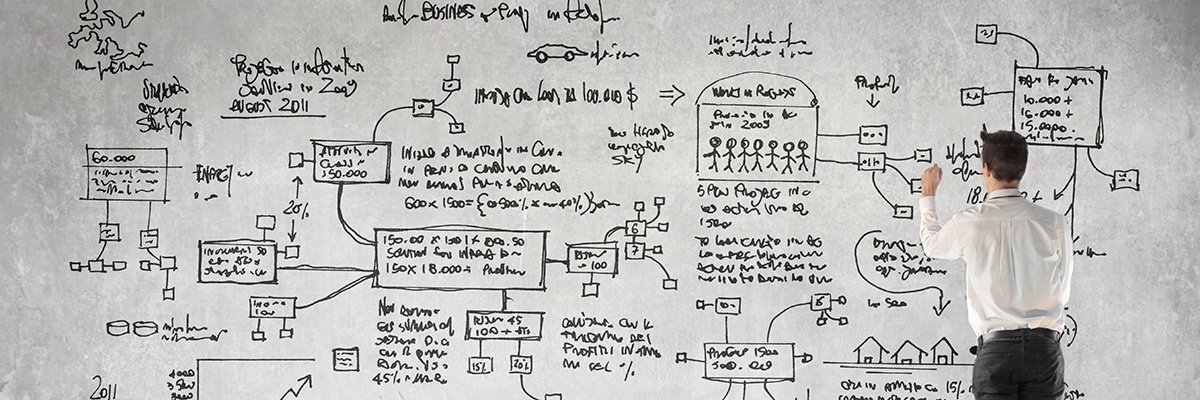
olly - Fotolia
TotalCIO
TotalCIO is the blog companion to SearchCIO.com, which examines strategic issues that are important to CIOs, CTOs and other senior IT leaders. TotalCIO is the home for short articles that provide color and add depth to the coverage on SearchCIO.com.
Recent Posts
-

COVID-19 has mixed effect on Nvidia news
- News Writer 25 Mar 2020 -

When does the state of quantum computing become relevant for CIOs?
- Industry Editor -- CIO/IT Strategy 30 Apr 2019 -

The CIO job on steroids: The 'CIO-plus'
- Industry Editor -- CIO/IT Strategy 20 Mar 2019
During an Nvidia news call this week, company officials said the coronavirus pandemic has had a mixed impact on its business, with work-from-home-related sales up but certain sectors, such as sales ...
What do CIOs need to know about the state of quantum computing? Forrester Research provides some guidance.
The term CIO-plus came up in a recent conversation about the attributes of a successful CIO. It's another twist on the ever-morphing CIO job.
-

The big data paradox, or why no one thought Trump would win
- Industry Editor -- CIO/IT Strategy 28 Feb 2019 -

RPA bots vs. case management -- both have value, one is transformative
- Industry Editor -- CIO/IT Strategy 31 Jan 2019 -

Adobe CFO John Murphy on CFO role as digital transformation evangelist
- Industry Editor -- CIO/IT Strategy 30 Nov 2018 -

Include dark web security strategies to strengthen security framework
30 Nov 2018 -

Advancing tech, analytics techniques give rise to the 'digital CFO'
- Executive Editor 29 Nov 2018 -

Cisco network architecture targets CIOs. Will they buy it?
- Industry Editor 28 Nov 2018 -

Multivendor RPA strategy is trending at enterprises
- Industry Editor -- CIO/IT Strategy 26 Nov 2018
It's commonly assumed that statistical analysis improves as sample size grows. But big data isn't always better data. A Harvard statistician explains why it's not that simple.
RPA bots save costs, boost productivity and can improve customer experience. What they don't do is provide the transformational process change most companies need today, says Don Schuerman.
Adobe's John Murphy discusses the CFO role in digital transformation at the recent MIT Sloan CFO Summit. One new aspect of his job: He's out there selling digital transformation.
As dark web security threats rise, enterprises should begin incorporating strategies to understand and implement dark web cyber-security measures.
The rise of digitized processes and data analytics in modern companies has unquestionably influenced the CIO's role -- a topic we cover often here on SearchCIO. But realizing the importance of ...
An emerging Cisco network architecture that spans multiple domains and integrates security debuted at a recent conference. The vendor's architectural messaging targets CIOs.
All RPA platforms are not the same. A multivendor RPA strategy is taking shape at enterprises -- for multiple reasons.
-

Beware of unwitting bias in AI algorithms, experts say
- Senior News Director 21 Nov 2018 -

IBM-Red Hat deal: Minimal influence on CIOs' cloud decisions, for now
02 Nov 2018 -

In 2019, CIOs should strive for flexible analytics architecture
- Senior News Director 31 Oct 2018 -

Will acquiring a cybersecurity company fix Facebook's security woes?
31 Oct 2018 -

Digital transformation for banks: One institution's website remake
- Industry Editor 30 Oct 2018 -

Cook's call: Put federal data privacy law in the spotlight
30 Oct 2018 -

Forget Hollywood's AI promises, results are what inspires next-gen tech pros
18 Oct 2018 -

Enterprise digital transformation: How CIOs can drive business growth
12 Oct 2018 -

How ITSM can help CIOs drive SLAs in a multi-cloud environment
- Industry Editor -- CIO/IT Strategy 29 Sep 2018 -

Many companies jump the gun in hiring data scientists
28 Sep 2018 -

AI companies come in three flavors, says AI investor
- Senior News Director 26 Sep 2018 -

Startup accelerator The Engine tackles 'tough tech'
- Senior News Director 14 Sep 2018 -

Multi-cloud strategy: Determine the right cloud for your workloads
07 Sep 2018 -

AI and automation will need more than a great user experience
- Senior News Director 31 Aug 2018 -

A look inside MX's flat organizational structure
31 Aug 2018 -

ITSM program: Tips on where to start, from a CIO who's been there
- Industry Editor -- CIO/IT Strategy 31 Aug 2018 -

Cybersecurity education: North Dakota preps future workforce
- Industry Editor 29 Aug 2018 -

Building inclusive teams gets more attention from CIOs
- Senior News Director 20 Aug 2018 -

Machine learning, AI in security: Advancing the cybersecurity landscape
07 Aug 2018 -

In a hot RPA market, the 'rule of five' keeps CIOs focused on use cases
- Senior News Director 31 Jul 2018 -

ITIL 4 has some bones to pick with ITSM trends
- Industry Editor -- CIO/IT Strategy 31 Jul 2018 -

Cybersecurity trend watch: The power of data
- Executive Editor 31 Jul 2018 -

Cybersecurity trend watch: Data protection's business influence
- Executive Editor 31 Jul 2018 -

The industrialization of AI: from alchemy to chemical engineering
- Senior News Director 31 Jul 2018 -

Microsoft industry focus remains priority in FY19
- Industry Editor 31 Jul 2018 -

What's driving the adoption of the CIO-CDO dual role?
31 Jul 2018 -

AR headsets in the enterprise: An expert perspective
31 Jul 2018 -

Boston Fed takes on future of blockchain, launches hands-on project
- Industry Editor -- CIO/IT Strategy 23 Jul 2018 -

Chief data officer role today: Less on defense, more on offense
- Senior News Director 02 Jul 2018 -

Embracing digital transformation: Airtel CIO discusses focus, benefits
29 Jun 2018 -

Got questions? Get them answered -- and make better data-driven business decisions
- TechTarget 31 May 2018 -

CIOs: Focus on applying AI and machine learning, not defining it
- Senior News Director 31 May 2018 -

Digital business strategy: Safe, end-to-end software development
- Executive Editor 31 May 2018 -

Digital talent: Liberty Mutual insists on engineers who can talk business KPIs
- Industry Editor -- CIO/IT Strategy 31 May 2018 -

Early-stage company execs talk partnering with CIOs
- Industry Editor 29 May 2018 -

Some types of artificial intelligence aren't ready for their close-up
- Senior News Director 30 Apr 2018 -

The Wild Wild West of conversational design
30 Apr 2018 -

Vulnerability management programs need an upgrade for the cloud era
27 Apr 2018 -

The need for mainframe work continues amid staff shortages
- Industry Editor 27 Apr 2018 -

Data, the cloud and its impact on the job of CIO
- TechTarget 05 Apr 2018 -

Deep neural networks, speed limit signs and training on the fly
- Senior News Director 31 Mar 2018 -

Vendor briefing on standardizing processes for RPA services
- Industry Editor -- CIO/IT Strategy 31 Mar 2018 -

Serverless computing architecture won't kill containers
- TechTarget 30 Mar 2018 -

Artificial intelligence strategies tackle 'reasonable goals' -- not moonshots
30 Mar 2018 -

AI voice assistants won't just book your meetings, they'll partake in them
30 Mar 2018 -

Cyber awareness program: How one CISO became a believer
30 Mar 2018 -

Data literacy training: CIOs just got a new job, yippee!
- Industry Editor -- CIO/IT Strategy 30 Mar 2018 -

Today's great cloud challenge: The hybrid IT puzzle
- TechTarget 29 Mar 2018 -

Voxbone tech chief: Customer service is the new job of CIO
- TechTarget 23 Mar 2018 -

AI's exponential curve: More from my interview with ISACA's Rob Clyde
- Senior News Director 15 Mar 2018 -

Who needs a tech futurist? In today's world, you do
- TechTarget 09 Mar 2018 -

Security best practices to guide your digital transformation journey
09 Mar 2018 -

Eying lower costs of cloud computing, Informatica to curb overbuying resources
- TechTarget 05 Mar 2018 -

Gartner: Machine learning platforms are in demand, market is in flux
- Senior News Director 02 Mar 2018 -

Forrester to CIOs: Blockchain networks are not truth machines
- Industry Editor -- CIO/IT Strategy 28 Feb 2018 -

Quest for resilience turns up ransomware backup strategy
- TechTarget 28 Feb 2018 -

AI attacks are coming soon to a network near you
- Senior News Director 28 Feb 2018 -

Unlockable iPhones, leaked code among Apple's security woes
28 Feb 2018 -

Survey: Attorneys still lack proficiency in e-discovery technology
- Executive Editor 28 Feb 2018 -

AI in the enterprise: A framework for success
- Senior News Director 27 Feb 2018 -

DTIM platform: New weapon against digital threats?
26 Feb 2018 -

Understanding of cloud computing ERP clearing -- but still foggy
- TechTarget 22 Feb 2018 -

In praise of recommendation engines, AI with proven ROI
- Industry Editor -- CIO/IT Strategy 12 Feb 2018 -

Cloud computing ecosystem: Greater than the sum of its parts
- TechTarget 07 Feb 2018 -

Cloud computing interoperability, portability key to multi-cloud unity
- TechTarget 31 Jan 2018 -

AI in the workplace: Try it, you'll like it
- Industry Editor -- CIO/IT Strategy 31 Jan 2018 -

The race to marry AI and cloud computing is on
- Senior News Director 31 Jan 2018 -

Digital epidemiology takes on the flu with help from you
- Senior News Director 30 Jan 2018 -

For CFOs, cybersecurity investments become a priority
15 Jan 2018 -

In digital era, CEO's job is to score with tech
- TechTarget 10 Jan 2018 -

Out of many, one hybrid cloud management platform
- TechTarget 31 Jul 2017 -

'Proof of value' -- not proof of concept -- key to RPA technology
- Industry Editor -- CIO/IT Strategy 18 May 2017 -

Nestlé builds 'digital ecosystems' to transform its massive bottled water biz
- Industry Editor -- CIO/IT Strategy 28 Apr 2017 -

Reporting lines for the CDO role: Context counts
- Senior News Director 06 Feb 2017 -

New cloud standards will help ease contract negotiations
- TechTarget 31 Jul 2016 -

To beat odds, procurement officers should focus on value, not cost
30 Mar 2016 -

The four facets of an Agile PMO
- Senior News Director 29 Feb 2016 -

KPMG: Death of BPO at the hands of RPA
- Industry Editor -- CIO/IT Strategy 24 Sep 2015 -

Duolingo cofounder explains crowdsourcing to the MIT crowd
- Industry Editor -- CIO/IT Strategy 31 Jul 2015 -

Reverse mentoring turns Millennials into teachers
- Senior News Director 10 Mar 2015 -

Sony breach: The new front in corporate cyber warfare?
- News Writer 12 Dec 2014 -

Why CIOs need to think like venture capitalists
- News Writer 05 Dec 2014 -

What's behind the attack on USPS security?
- News Writer 14 Nov 2014 -

Free Office apps to mobile users a teachable moment for CIOs
- News Writer 07 Nov 2014 -

The White House Hack: More Trick Than Treat
- News Writer 31 Oct 2014 -

500 million stolen financial records in the last 12 months
- News Writer 24 Oct 2014 -

Is there a business workhorse behind the comely exterior of iPad Air?
- News Writer 17 Oct 2014 -

Machine learning, AI and the enterprise
- Senior News Director 14 Oct 2014 -

A quick lesson from HP's split
- News Writer 10 Oct 2014 -

Desperately seeking the digital future
- Industry Editor -- CIO/IT Strategy 03 Oct 2014
Companies need to know how bias can unwittingly creep into recommendations from AI algorithms, according to panelists at the recent AI and the Future of Work event at MIT. Sophie Vandebroek, vice ...
The tech world has been abuzz after news that IBM is snapping up Red Hat for a whopping $34 billion, making it the third biggest tech-deal of all time. Experts say, however, that the IBM-Red Hat ...
Data and analytics are part of everyday survival for companies. But according to a new research note from Gartner Inc., organizations are struggling to manage the data they have let alone establish ...
Earlier this month I wrote about lessons businesses can learn from the Facebook data breach that affected millions of users. News has now surfaced that Facebook is rumored to be shopping for a ...
Digital transformation for banks: A commercial bank in India retooled and relaunched its website to drive more visits and generate more leads.
Federal data privacy law mandates have long been anathema to tech industry leaders, but Apple CEO Tim Cook's call for regulation could serve as a rallying cry for advocates of consumer's ...
During the "Lunch with Robots" panel at HubWeek 2018, host Jim Tracy asked a question that reflected a major theme of the weeklong event: How is the workforce going to change in the next 20 years, ...
Digital transformation is becoming a reality for many organizations: IDC forecasts worldwide spending on technologies and services that drive enterprise digital transformation to soar past $1 ...
How do CIOs drive service level agreements (SLAs) in a multi-cloud environment? That's an important question when at issue is an end-to-end IT service involving many cloud providers, and the goal ...
Do you know why you're hiring data scientists? A lot of companies feel pressure to hire one, but a lot of companies aren't ready for them or don't know what to do with them, said Stephen Gatchell, ...
Venture capitalists who spoke in a panel discussion at the recent Emotion AI Summit in Boston tended to refer to AI companies as being either vertical, or industry specific, or horizontal, serving ...
Investment dollars continue to flow heavily into tech startups, but the majority of bets are placed on technology products -- mostly consumer apps -- that could pay dividends in three to five ...
Businesses typically deploy a multi-cloud strategy to gain more agility, flexibility and choice, but Ed Featherston's advice for CIOs taking their first foray into the cloud is to pick one provider ...
CIOs are often inundated with vendor promises of a user experience so superb, they won't need to fret about employee training. But CIOs should be skeptical when they hear promises like these, ...
At Gartner Catalyst 2018, analysts highlighted digital banking platform company MX's flat organizational structure as a model for IT pros to pull from when driving cultural change at their companies.
Link Alander has spent nearly a decade taking Lone Star College's ITSM program from subpar to superior. Here, he offers some tips for CIOs just getting started.
North Dakota's CIO is behind a cybersecurity education program that aims to get the state's students up to speed on the essentials of IT security.
Conversations about gender and racial equality aren't just happening in the political and social sphere, they're also happening in the C-Suite. Kristi Lamar, managing director and U.S. CIO program ...
More companies today are investing in AI-based cybersecurity technology to speed up incident detection and response, to better identify and communicate risk to the business, and to gain a better ...
The robotic process automation market is advancing at a rapid clip. "Market growth is exceeding our greater than 50% CAGR to get from $500 million to $2.8 billion in five years," said Craig Le ...
New guidance from ITIL -- the widely adopted framework for the design, delivery and maintenance of IT services -- is scheduled to be published in early 2019. ITIL 4, as it's called, is the first ...
It's no secret that data equals power in the digital marketplace, making strategies to protect that data a valuable business asset. The fast pace of IT advancement also makes the cybersecurity ...
As business leaders continue to realize the bottom line value of data protection, the cybersecurity market is already ripe for disruption. At the Gartner Security & Risk Management Summit in ...
Artificial intelligence is modern-day alchemy, according to Qirong Ho, the CTO and co-founder of Petuum Inc., an AI and machine learning startup. "Alchemy is about chasing the most exciting ...
CIOs can expect the Microsoft industry focus to continue this year as the company seeks to boost its digital transformation business.
As the digital revolution continues, the ideal CIO is one that possesses both technical knowledge and business acumen to help drive their company's digital transformation initiative forward. One ...
In his book, The Fourth Transformation, Shel Israel makes the argument that augmented reality -- the superimposition of digital information on the real world -- is the next technology innovation ...
Paul Brassil, vice president of IT at the Federal Reserve Bank of Boston, tells an auidence of CIOs at the Forrester New Tech & Innovation Forum about why his team cares about the future of ...
Customer experience is front and center for every member of the C-suite today -- from the CEO down. That goes for the chief data officer role, too. CDOs were once seen as the high stewards of data ...
Companies embracing digital transformation shouldn't let the fear of failure slow down their digital initiatives, Harmeen Mehta, global CIO and head of digital at Indian telecom giant Bharti ...
Companies today want to make data-driven business decisions, but huge volumes data could lead them astray. So could huge volumes of questions about the data. Rue La La's CTO has tips for countering ...
For CIOs and CTOs, asking which computing approaches add up to artificial intelligence and which are simply automation or BI is probably not a very useful question. The better question to think ...
For CIO Frederic Veron, ensuring software runs "safe and sound" is a big part of his digital business strategy role. To get there, he gets involved early in the development stages.
Liberty Mutual Insurance takes a two-pronged approach to building its digital talent ranks: recruit from the outside and offer coding lessons to existing employees.
Participants in the 2018 MIT Sloan CIO Symposium's Innovation Showcase discuss the relationship between early-stage company execs and the C-suite.
Michael Ringman, CIO at TELUS International, has a unique vantage point on artificial intelligence and how the technologies under the AI umbrella are developing. He's helping build an artificial ...
Sociologist and conversation analyst Bob Moore and artist and UX designer Raphael Arar -- researchers at IBM Research -- are working at the forefront of an emerging field: Conversational UX design. ...
Gone are the days of simple, easily secured corporate networks. The proliferation of cloud computing, virtualization and containers means that the network is changing constantly, said Nate Palanov, ...
The need for mainframe work continues as important applications continue to reside on these computing machines, but staff shortages are an issue in maintaining big iron's health.
Cloud computing has made it so easy to create data and move into and out of business, according to one tech vendor exec, it's changed the focus of the job of CIO.
Because of data and compute power requirements, training a deep learning algorithm doesn't typically happen on so-called edge devices such as smartphones or drones. But Neurala Inc., a deep ...
Robotic process automation (RPA) services promise eye-popping returns on investment. Here, a veteran business process improvement expert talks about his experiences in preparing Fortune 100 ...
As a way of building applications, serverless computing architecture is gaining in popularity. But it won't replace containers or any other development method, Red Hat's Rich Sharples says.
The Gartner Data & Analytics Summit I've been writing about recently was filled with prescriptive advice for data analytics leaders. Much of that advice, unsurprisingly, was focused on the ...
Imagine asking Cortana about your revenue last quarter. That could be the future, according to Gartner analyst Svetlana Sicular. At the Gartner Data and Analytics Summit, Sicular discussed some of ...
It took a nation-state attack for Alan Levine to realize the importance of implementing a cyber awareness program. "I believed that cyber awareness training was useless because I believed my users ...
Data literacy is fast becoming a requirement in the modern digital enterprise, but many so-called knowledge workers lack the ability to read data. Should CIOs take on the job of data literacy training?
Companies are still in an early phase of a big cloud challenge: managing a mishmash of public and private cloud systems and data centers. And they may have to wait on vendors to help tackle it.
The job of CIO is changing all right, and cloud computing is hastening that transition. Today, IT leaders are using cloud to solve old problems -- and form new bonds with the business.
I recently talked about the use of AI in the enterprise with Rob Clyde, vice chairman of the board of directors at ISACA, an organization focused on IT governance. The conversation focused on a new ...
A Chicago consulting outfit hires a tech futurist to help clients prepare for the fast-coming next waves of technology. But looking at the future to prepare today isn't just for consultants.
With more companies embarking on a digital transformation journey, enterprise data is being spread across devices, systems and even in the cloud. As a result, focusing security efforts on ...
Overprovisioning pushes up the costs of cloud computing. But stopping the practice completely would result in damage of a different sort.
The market for data science and machine learning platforms is in flux. According to a new report by the research outfit Gartner, the more established players are being usurped by nimble players ...
Who couldn't use a little clarity on blockchain? A new report from Forrester Research separates myth from the current reality of blockchain networks.
Waste Industries found an unexpected benefit in a software project that aimed to make data always available: a ransomware backup strategy.
The rapid development of artificial intelligence and machine learning is a double-edged sword. The technologies are becoming cheaper and easier to apply to the enterprise, which is also making it ...
Security on Apple devices might not be as impenetrable as many thought. Forbes reported this week that Cellebrite, an Israel-based vendor and major U.S. government contractor, is now able to unlock ...
E-discovery technology has become an integral -- and essential -- element of the modern legal process, but a new report suggests attorneys are still struggling to embrace the technology. A survey ...
Developing an AI use case that lays out what the project will cost, the value it will provide and the potential risks it will bring can be a head scratcher for CIOs. AI in the enterprise is ...
Digital threats pose a big challenge for organizations today, and cybercrime groups are only getting better at achieving their goals: In 2016, nearly one billion personal records and over one ...
Companies drawn to the centralizing simplicity of cloud computing ERP need to fully grasp the characteristics that make it different from on-premises software, according to the Cloud Security Alliance.
Is an infatuation with deep learning blinding CIOs to other, more accessible forms of AI, to wit: recommendation engines? So says digital transformation guru Isaac Sacolick.
The cloud affords companies the freedom to try new things fast. But they also risk "totally losing control," says analyst Liz Herbert. A cloud computing ecosystem imposes a sense of order.
Companies struggling with multiple cloud services need to strive for cloud computing interoperability and portability, the Cloud Standards Customer Council says. First up – define the terms.
Google and its big tech compatriots know what we're up to much of the time; it won't be long before employers do too. Welcome to the future workplace; behold the quantified worker.
Amazon, Microsoft and Google are in a race to ally AI and cloud computing by incorporating deep learning, machine learning and other AI functionality into their product offerings, giving developers ...
John Brownstein, chief innovation officer at Boston Children's Hospital and a professor of biomedical informatics at Harvard Medical School, is a notable digital epidemiology researcher. It's a ...
Cybersecurity is no longer just an IT problem; it's a cross-functional priority for the enterprise. As cyberattacks and cyber risk continue to swell, the cybersecurity consciousness among the ...
Lisa Pearson, chief exec at data analytics company Umbel, discusses the CEO's job -- ever-slanting toward tech -- in a time of the "superpower consumer."
A hybrid cloud management platform must mix well with business systems, give financial guidance and make security a priority, industry experts say.
Companies interested in robotic process automation (RPA) technology get fixated on proving it works, not its business value. Here's how to fix that.
ReadyRefresh, the name for Nestle S.A's re-imagined bottled water delivery business, will succeed based on its mastery of three digital ecosystems.
The chief data officer (CDO) role may be gaining influence, but a lingering question that both public and the private sector organizations have yet to answer is: Who should CDOs report to? ...
Cloud service agreements -- which spell out the obligations and responsibilities a cloud provider and a customer must adhere to -- are documents organizations with IT operations in the public cloud ...
Chief procurement officers (CPO) have a very short window of time in which to make their mark at a company: The average tenure is less than five years.
The Agile project management office (PMO) leverages the centralized portfolio management team to deliver on projects and products faster, said Michael Nir, president and founder of Sapir Consulting ...
Bangalore, Delhi, Manila, Cebu City, Shanghai. CIOs have traveled far afield in search of cheap labor for business process outsourcing (BPO). But according to a recent report from Cliff Justice, ...
When Luis von Ahn was 12, he dreamed of becoming a "gazillionaire" by building a chain of free gyms where the kinetic energy people expended on exercise equipment would be captured and sold to ...
In 2007, Apple introduced its first generation iPhone. Yesterday, it announced the launch of its much-anticipated iWatch. It's just one example of how consumer technology is marching on at an ...
Data breaches have unfortunately become the norm. But the now infamous Sony breach has opened the eyes of the IT world to the fact that we haven't seen the end of what cyber attacks have in store ...
If you had the opportunity to be the next Uber would you take it? An innovative technology could mean a company's big break or, as in the case of Uber, disrupt an entire industry. Nowadays, ...
Another week, another security breach. This time the U.S. Postal Service was the victim and experts speculate Chinese hackers were the culprits. The interesting aspect of this breach is that it's ...
The big news this week is that Microsoft has decided to change up its software strategy. The software giant is now offering free Office apps for iPhone and Android users and has even made a deal ...
Hackers have become highly organized and specialized -- so much so that some hacked into the White House's unclassified computer network earlier this week. Luckily, the administration's ...
Week after week a new breach is reported, followed by more advice on how best to protect yourself. But as this week's news roundup from SearchCIO's Fran Sales shows, the degree to which companies ...
Not so long ago, SearchCIO cautioned CIOs to hold off on replacing PCs with tablets. Despite all the user-friendliness of tablets, there was not a whole lot of heavy duty work that we business ...
By 2020, Gartner predicts that smart machines, which use machine learning to complete tasks humans would otherwise perform, will have a widespread impact on the business. And, in less than three ...
Everyone has been buzzing this week about HP's split into two smaller companies. The general consensus on the spilt? Smart move, HP. It's clear consumers favor social, mobile, analytics and cloud ...
Man overboard! Or, in the case of The New York Times this week, make that 100 newsroom jobs cut loose, kaput, as the newspaper navigates the perilous seas of the digital economy. "The job losses ...